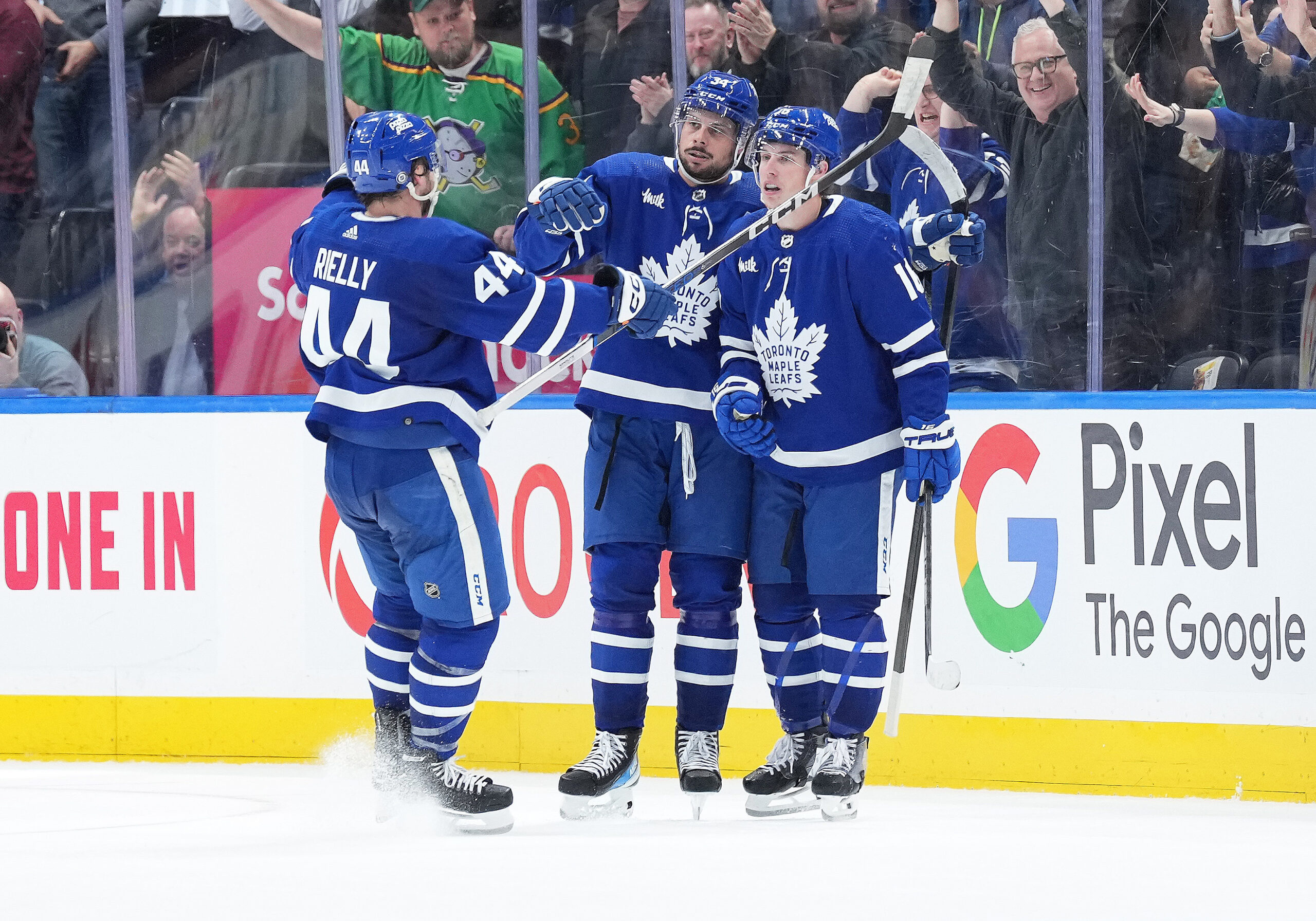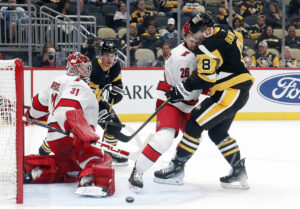The Toronto Maple Leafs, one of the NHL’s most storied franchises, has seen several ownership changes throughout its long history. With Rogers Communications completing a proposed $3.5 Billion buyout of competitor Bell Media’s 37.5% stake, Rogers will own 75% of the Maple Leafs.
Maple Leafs Ownership in the Early Years
The franchise that would become the Maple Leafs was established in 1917 as the Toronto Arenas, owned by the Arena Gardens of Toronto, Limited. In 1919, the team was sold to the St. Patrick Hockey Club and renamed the Toronto St. Patricks.
Leafs Ownership During the Conn Smythe Era (1927-1961)
In 1927, Conn Smythe purchased the franchise for $160,000 and renamed it the Toronto Maple Leafs. Smythe formed Maple Leaf Gardens Limited (MLGL) in 1931 to finance the construction of Maple Leaf Gardens. Under Smythe’s ownership, the team won seven Stanley Cups. It was a transformative and highly successful period for the franchise.
In 1961, Smythe sold 90% of his shares to a triumvirate consisting of his son Stafford Smythe, Harold Ballard, and John Bassett for $2.3 million. This group oversaw four more Stanley Cup victories.
Harold Ballard Leafs Ownership Era (1972-1990)
Following a series of disputes and Stafford Smythe’s death, Harold Ballard emerged as the majority owner in 1972. Ballard’s tenure was marked by controversy and poor team performance, with the Leafs becoming a “laughingstock of the league”.
Harold Ballard’s ownership had a significant negative impact on the Toronto Maple Leafs’ performance and reputation. Under Ballard’s sole ownership from 1972-1990, the Maple Leafs had a losing record of 596-736-207. They only had six winning seasons in Ballard’s 18-plus years as majority owner. During his tenure, the Leafs never finished higher than third in their division and won only two playoff series in his last 13 seasons.
Ballard’s poor treatment and management drove away many talented players. He traded or failed to re-sign stars like Dave Keon, Lanny McDonald, and Darryl Sittler, which have been sore spots in LeafsNation since. While the team was profitable, Ballard was unwilling to increase payroll to improve the on-ice product, despite playing in a large market.
Ballard created a hostile atmosphere through his abusive behavior, public criticism of players, and interference with coaching decisions. His controversial statements, racist remarks, and legal troubles (including fraud convictions) tarnished the team’s image. Many fans consider the Ballard era to be the darkest period in team history.
The team’s struggles continued even after his death, with some attributing this to a “curse” stemming from his mismanagement. The creation of the World Hockey Association (WHA) in 1972 led to the Leafs losing many promising young players, as Ballard failed to take the rival league seriously.
In summary, Ballard’s ownership era was characterized by poor decision-making, financial priorities over on-ice success, and a toxic management style that significantly hindered the Maple Leafs’ competitiveness and reputation for many years.
Also Read: Top 10 Toronto Maple Leafs Since 1967
Steve Stavro Years (1990-2003)
After Ballard’s death in 1990, Steve Stavro gained control of the team[2][4]. In 1998, Maple Leaf Gardens Ltd. acquired the Toronto Raptors and the Air Canada Centre, leading to the formation of Maple Leaf Sports & Entertainment (MLSE). Unlike his predecessor Harold Ballard, Stavro preferred to stay out of the limelight and rarely interfered with the team’s hockey operations. Stavro partnered with the Ontario Teachers’ Pension Plan to purchase the team, which provided financial stability.
Under Stavro’s ownership, the Leafs became a perennial contender once again, after years of struggle during the Ballard era. With many marketable players like Doug Gilmour, The Leafs were able to record a franchise-best 99 points in the 1992-93 season and won their first division title in 37 years in the 1999-2000 year.
The Leafs thrived financially during this period, benefiting from being based in the league’s fourth-largest market. Under Stavro’s leadership, Maple Leaf Sports & Entertainment (MLSE) acquired the Toronto Raptors basketball team and built the Air Canada Centre (now Scotiabank Arena) in 1998. Stavro worked to restore dignity to the franchise, including bringing back retired numbers and honoring team alumni.
Sale of ownership: In 2003, Stavro sold his stake in MLSE to Bell Globemedia, ending his tenure as the team’s owner. While the Leafs didn’t win a Stanley Cup during Stavro’s ownership, they became a much more competitive and respected franchise compared to the previous era.
Ontario Teachers’ Pension Plan Ownership Years (2003-2011)
In 2003, the Ontario Teachers’ Pension Plan became the majority shareholder of MLSE, owning 58% of the company. The Ontario Teachers’ Pension Plan (OTPP) played a significant role in the ownership of the Toronto Maple Leafs from 1994 to 2012.
In 1994, OTPP bought a stake in the ownership of the Maple Leafs, joining Steve Stavro and TD Bank in the ownership group. By 2003, OTPP had become the majority owner of Maple Leaf Sports and Entertainment (MLSE), which owned the Maple Leafs and other sports properties. At its peak, OTPP owned 79.53% of MLSE. OTPP considered MLSE one of its longest-standing and most successful investments, having first invested in 1994.
In 2011, OTPP initiated an eight-month review process to consider selling its stake in MLSE. On December 9, 2011, OTPP announced an agreement to sell its 79.53% ownership share to Bell and Rogers Communications for $1.32 billion. The sale was finalized on August 22, 2012, with OTPP receiving the full purchase price of $1.32 billion.
While OTPP didn’t explicitly state reasons for selling, the substantial return on investment (from $180 million in 1994 to $1.32 billion in 2012) likely played a role. During OTPP’s ownership, the Leafs experienced both successes and challenges on the ice, including a decline in performance in the later years. The sale of OTPP’s stake to Bell and Rogers marked the end of an era for the Maple Leafs and ushered in a new phase of corporate ownership for the franchise.
Also Read: The Best Draft Class in Toronto Maple Leafs History
Ontario Teachers’ Pension Plan Decides to Sell
OTPP decided to sell their stake in the team despite it being one of Teachers’ longest-standing and most successful investments. Although OTPP initially decided not to sell MLSE in November 2011, they received an unsolicited offer from Bell and Rogers that met all of their original terms and conditions for sale.
Jane Rowe, Senior Vice-President of Teachers’ Private Capital, stated that the sale “exemplifies our ability to create value over the long term through expansion and diversification, while delivering returns that support our members’ retirement”. After an eight-month review process of numerous expressions of interest in MLSE, the offer from Bell and Rogers came at an opportune time. OTPP believed that Bell and Rogers, along with minority owner Larry Tanenbaum’s Kilmer Sports, would be able to “deliver on the company’s potential”. Market conditions: The sale price of $1.32 billion was based on an enterprise value of just over $2 billion, indicating favorable market conditions for the sale.
Current Leafs Ownership (2012-Present)
In 2012, telecommunications giants Bell Canada and Rogers Communications jointly purchased a 75% stake in MLSE, each team maintaining 37.5% share, with Larry Tanenbaum’s Kilmer Sports increasing its stake to 25%. This current ownership structure has maintained control of the Maple Leafs since then.
The Leafs were run as a corporate entity with a board of directors. There were sometimes disagreements between Bell and Rogers representatives on the board regarding team personnel and front office decisions. Still, the Bell-Rogers ownership provided financial stability for the franchise, as both are large telecommunications companies.
The joint ownership allowed both companies to secure broadcast rights for Leafs games on their respective sports networks (TSN for Bell, Sportsnet for Rogers).
Difficulties with Joint Rogers-Bell Ownership
Neither Bell nor Rogers had majority control, which may have impacted decision-making processes. Some critics argued that the corporate ownership structure and divided control may have negatively impacted on-ice success. In September 2024, Rogers announced it was buying out Bell’s 37.5% stake for $4.7 billion, giving Rogers 75% ownership of MLSE and majority control of the Maple Leafs.
Throughout its history, the Maple Leafs’ ownership has played a significant role in shaping the team’s fortunes. From the glory days under Conn Smythe to the tumultuous Ballard years and the current corporate ownership, each era has left its mark on one of hockey’s most valuable and popular franchises. Only time will tell how the Rogers Era will be received and whether they can finally help to deliver a Stanley Cup in what has been one of the worst droughts in pro sports.






